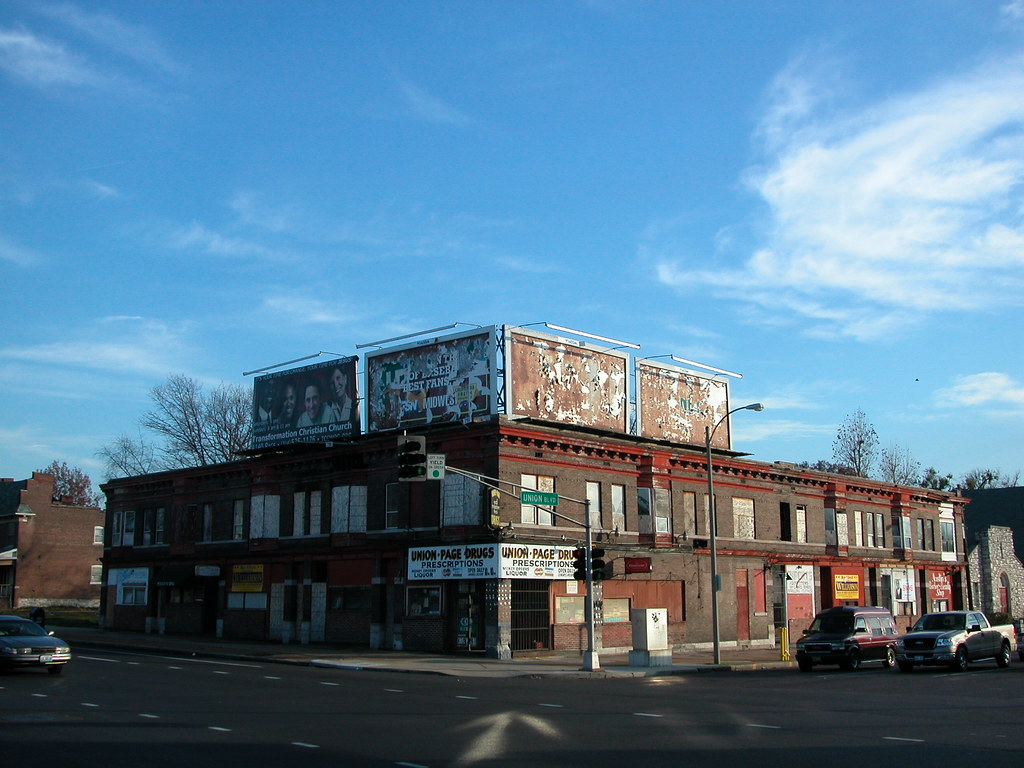Alas, the cause for the crowd was political: the majority of people in the audience were members of the Berean Seventh Day Adventist Church on Union Avenue, which was appealing Cultural Resources Office staff denial of a demolition permit for the building at the southeast corner of Page Boulevard and Union Avenue. Their purpose seems benign: they want to replace a fire-damaged, abandoned building that neighbors loathe with a gymnasiusm and educational center. There is an interim step of surface parking, but the new building should be standing within two years.

Yet closer examination of the church's plan and the conduct of the church through the demolition permit process makes their plan seem quite controversial. First, the church applied for a permit in April 2007. After denial, the church attorney sought and obtained two continuances without so much as letting CRO staff know why. Then they finally show up, long after the denial, with a crowd of congregants and an attorney with a thick new brief.
Then there is the fact that the gymnasium and educational center plans dissolve under scrutiny. The church simply does not have solid plans. They have a possible site plan and rendering, prepared by an unregistered intern architect working for St. Louis Design Alliance. They don't really have a time line or cost estimates. The church plans to build the shell of the building and gradually finish the interior. Even the parking concern seems weak given that they have use of Walgreens' parking lot across the street in evenings.
Most important, there is the building that the church wants to demolish. The two-story brick commercial building is the last discernibly urban building at one of the most prominent intersections on the north side. The building comes up to the sidewalk, offering definition to the area. Literally, the building anchors the corner. Page and Union abound with glorious buildings, but their intersection has become ugly with Walgreens and a supermarket presenting parking lots to the corner on the west side. That's a sad fact, but a changeable one. This building offers the first step toward that change.
Architect George H. Kennerly designed the building, which was built in 1905. The elaborate tin cornice and cladding around the projecting bays show Classical Revival and perhaps some Italianate influences. Although marred by peeling paint, the tin is in excellent condition and would restore beautifully. The bay windows create an eloquent rhythm and provide definition to the otherwise boxy form. A small fire has left the building with some damage, including roof collapse, but overall it's sound. This is the type of building that seems infinitely adaptable to community needs. Every neighborhood needs buildings with combinations of walk-in and walk-up spaces.

Furthermore, the building is within the boundaries of the Mount Cabanne/Raymond Place National Historic District. That fact is noteworthy for two reasons: historic rehab tax credits are available there, and that district has lost many buildings like this one at its southern edge along Delmar.
The Preservation Board did not consider the appeal until nearly 7:30 p.m. Attorney Richard Kenney of Polsinelli Shalton Flanigan Suelthaus began the church's presentation, which seemed to add other speakers impromptu. Kenney presented a brief written by William Kuehling of his firm. City Counselor objected to Kenney's evidence, which made many assertions about the inability of the church to reuse the building. Frankly, the church's use of so many people to testify weakened their case through confusion and exhaustion of nonpartisan witnesses and Board members. Recounting and contesting the church members' testimony would be tedious and unhelpful to readers of this blog. Eventually, Chairman Richard Callow announced that the Board would take no vote until CRO staff and Board members could carefully examine the church's evidence. (A special January Preservation Board meting is likely.) However, testimony continued until after 10:00 p.m.
Not one person testified in favor of preservation; myself and others had left for other enagagements. However, the hearing of the matter is still open and citizens should send testimony to the Preservation Board by emailing Board Secretary Adona Buford (BufordA@stlouiscity.com).
Meantime, one hopes that the church is not too intractable to reconsider their options. The church owns vacant lots on Page, owns an incredible building (potentially worth money to a developer) and enjoys support of its neighborhood, nearby businesses and its Alderman, Frank Williamson. The battle mentality is premature; with the church's connections it could find a way to do what it wants without robbing a neighborhood of an important architectural anchor.
(Photographs by the author.)





4 comments:
How long as the church group owned the property, and is there any chance some of their members or representatives might engage in some discussion here at Ecology of Absence?
There were rehabs happening in this area and selling at new neighborhood highs. I've actually wondered / hoped this one could be saved. The people in it seem to lean towards the just get rid of it crowd though. Like the building is somehow the reason for neighborhood problems. While the market was up this neighborhood was turning, how is it now?
People living in the area lean towards the demo crowd that is.
Yeah, but chances are most of the church membership comes from outside the neighborhood.
Post a Comment